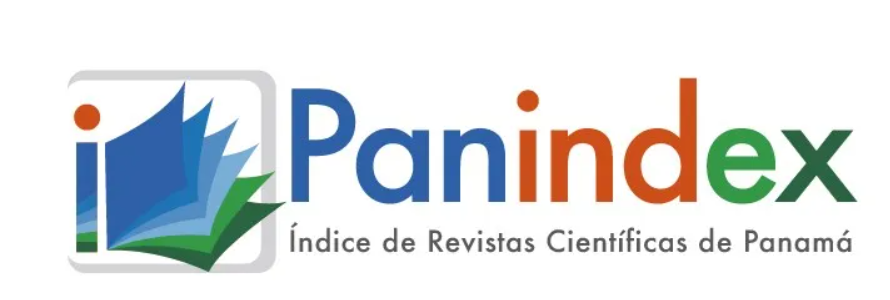Manuscripts sent to SALUTA Magazine must be original and unpublished and must not be simultaneously in the process of publication in other magazines, compilations or any other means of publication. The content of the publications and the links suggested in them are the sole responsibility of the authors and not of the METROPOLITAN UNIVERSITY OF EDUCATION, SCIENCE AND TECHNOLOGY
(UMECIT) or the magazine SALUTA. They are protected by international copyright laws as well as the logos of UMECIT AND SALUTA MAGAZINE, hence their reproduction is totally prohibited. The copyright will belong to the UMECIT.
Under a Creative Commons Attribution License authors may share work with acknowledgment of authorship of the work and initial publication in this journal.



Abstract
Many anatomical structures are involved during musical performance. From breathing, whose physiology involves anatomical structures such as the lungs, together with the respiratory muscles; the maxillofacial structures such as the temporomandibular articulation, together with the chewing muscles, the tongue and the orbicularis of the mouth; the upper members, their joints and musculature; and, finally, the spine and the muscles of the dorsum. As a whole, these structures are the perfect gear that allows musical interpretation; however, they represent at the same time the target to be victims of pathologies associated with the excessive use of any of them. Physiotherapeutically, knowing these pathologies will allow us to develop protocols for the prevention and care of injuries, rehabilitation and maintenance of the state of health of the structures involved. This research is currently in the execution period, however, after the literature review, and a grosso modo observation of the musicians at the moment of performance, we can say that there is activity of the respiratory muscles, diaphragm, orbicularis of the mouth muscle, temporomandibular articulation, joints and muscles of the upper member and of the dorsum muscles, and also of the spine. In conclusion, all these structures are exposed to injuries due to fatigue or muscular overload.
Keywords
References
Almonacid-Canseco, G., Gil-Beltrán, I., López-Jorge, I., & Bolancé-Ruiz, I. (2014). Musculoskeletal disorders in professional musicians: a review of literature. Isciii.es. (21)
Bosco J. (2004). Tres de cada cuatro músicos tienen al menos un problema médico que les obliga a dejar de tocar momentáneamente. Europa Press Ciencia. (26)
CP GV. (2019). Instrumentos musicales como factor etiológico. Trabajo final de grado, 35–44. (3) (4)
Fernández Paz MLC. (2020). Meses medicina en español. (24)
Guzmán CP. (2018). Instrumentos musicales como factor etiológico. Trabajo final de grado, 35–44. (5)
Healthwise. (2022). Lesiones en los codos. Cigna. https://www.cigna.com/es-us/knowledge-center/hw/temas-de-salud/lesiones-en-los-codos-elbow. (12)
Hernández. G & Zamora. J. (2017). Ejercicio físico como tratamiento en el manejo de lumbalgia. Rev. salud pública vol.19 no.1. (27)
JM Ramírez. (2018). Revista internacional de medicina y ciencia de la actividad física y del deporte. (17)
Juel NG. (2017). Clinical examination and ultrasound of the shoulder. Tidsskrift for den Norske laegeforening: tidsskrift for praktisk medicin, ny raekke. (11)
Lf Ardilla Mora PA. (2019). Los trastornos temporomandibulares y la radiación láser. (6)
Lopera, M. S. (2019). LESIONES MUSCULOESQUELÉTICAS DE MIEMBRO SUPERIOR Y TRONCO EN. Medellin: CES. (25)
Maneiro F. (2014). Ruptura del músculo orbicular de los labios en un músico de viento (síndrome de Satchmo): a propósito de un caso. Med Segur Trab (Madr), 60(237), 779–85. Disponible en: http://dx.doi.org/10.4321/s0465-546x2014000400011. (2)
Marisol Toledo Sánchez. (2020). Programa de actividad física para los brazos. (18) (19) (20)
Molina, M. LaSalle. (2017). Músicos con dolor ¿Cómo podemos ayudarles? https://jomts.com/index.php/NeuroRehabNews/article/view/566. (16)
Portillo TG. (2015). Trastornos temporomandibulares en músicos. Gran Pausa. Disponible en: https://www.granpausa.com/2015/07/26/trastornos-temporomandibulares-en-musicos. (7)
Romeo PPF. (2020). Conocimientos de Fisiología respiratoria y la técnica vocal en los estudiantes de canto de la Universidad Nacional de Música. Lima. (8)
Torres, A., DDS. (2023, 8 junio). Diafragma. (9)
Urra K. (2023). Distonía del músico: una enfermedad profesional. En: Congreso Nacional sobre Enfermedades Profesionales de los Músicos: libro de actas del congreso. (22) (23)
Velázquez Sánchez, A., Merchán Cruz, E., & Hernández. (2015). Rango de movilidad y función descriptiva del dedo índice. Redalyc. (13) (14) (15)
Downloads
Publication Facts
Reviewer profiles N/A
Author statements
- Academic society
- Universidad Metropolitana de Educación, Ciencia y Tecnología
- Publisher
- Universidad Metropolitana de Educación, Ciencia y Tecnología



















